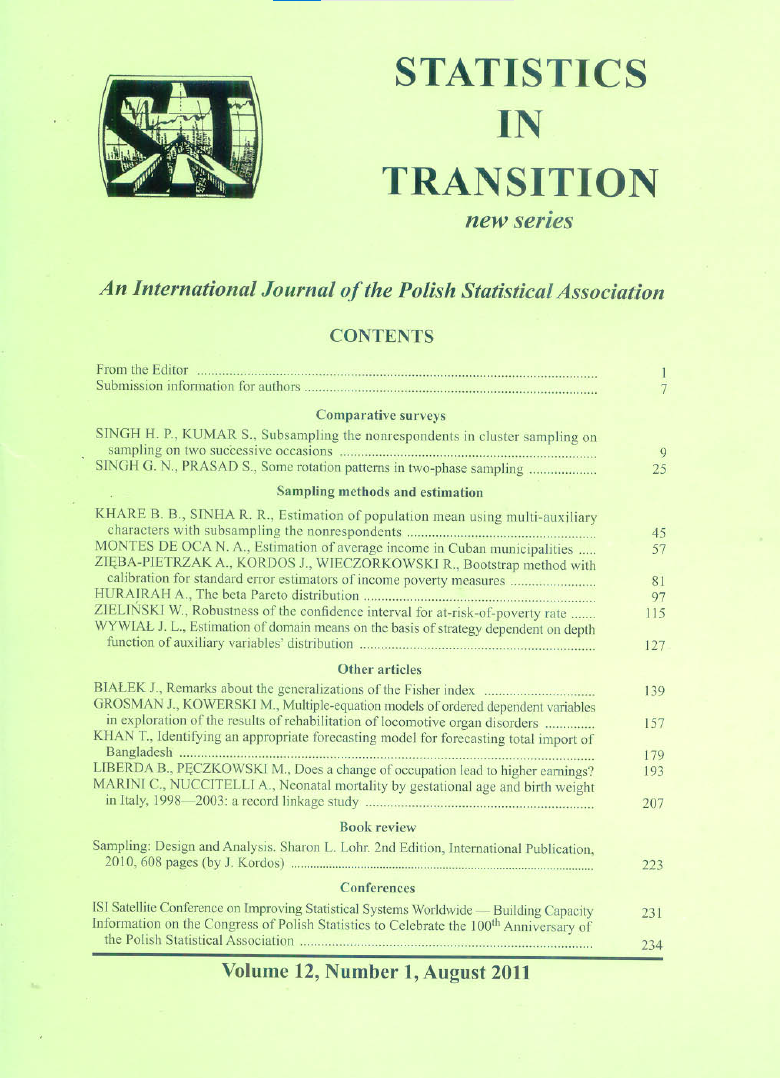ARTICLE
ABSTRACT
The paper deals with the problem of estimation of a domain means in a finite and fixed population. We assume that observations of a multidimensional auxiliary variable are known in the population. The proposed estimation strategy consists of the well known Horvitz-Thompson estimator and the non-simple sampling design dependent on a synthetic auxiliary variable whose observations are equal to the values of a depth function of the auxiliary variable distribution. The well known spherical and Mahalanobis depth functions are considered. A sampling design is proportionate to the maximal order statistic determined on the basis of the synthetic auxiliary variable observations in a simple sample drawn without replacement. A computer simulation analysis leads to the conclusion that the proposed estimation strategy is more accurate for domain means than the well known simple sample means.
KEYWORDS
sampling design, order statistic, auxiliary variable, sampling scheme, Horvitz-Thompson estimator, small area estimation, area sampling, depth function
REFERENCES
HORVITZ D. G., THOMPSON D. J. (1952). A generalization of sampling without replacement from finite universe. Journal of the American Statistical Association, vol. 47, 663-685.
LIU R.Y., PARELIUS J.M., SINGH K. (1999). Multivariate analysis by data depth: Descriptive statistics, graphics and inference. The Annals of Statistics, vol. 27, No. 3, 783-858.
MAHALANOBIS P. C. (1936). On the generalized distance in statistics. Proc. Nat. Acad. Sci. India vol. 12, 49-55. Tille Y. (2006). Sampling Algorithms. Springer.
WYWIAL J. L. (2007). Simulation analysis of accuracy estimation of population mean on the basis of strategy dependent on sampling design proportionate to the order statistic of an auxiliary variable. Statistics in Transition-new series vol. 8, No. 1, 125-137.
WYWIAL J. L. (2008). Sampling design proportional to order statistic of auxiliary variable. Statistical Papers, vol. 49, No. 2/April, 277-289.
WYWIAL J. L. (2009). Sampling design proportional to positive function of order statistics of auxiliary variable. Studia Ekonomiczne-Zeszyty Naukowe, 2009, 53, 35-60.
